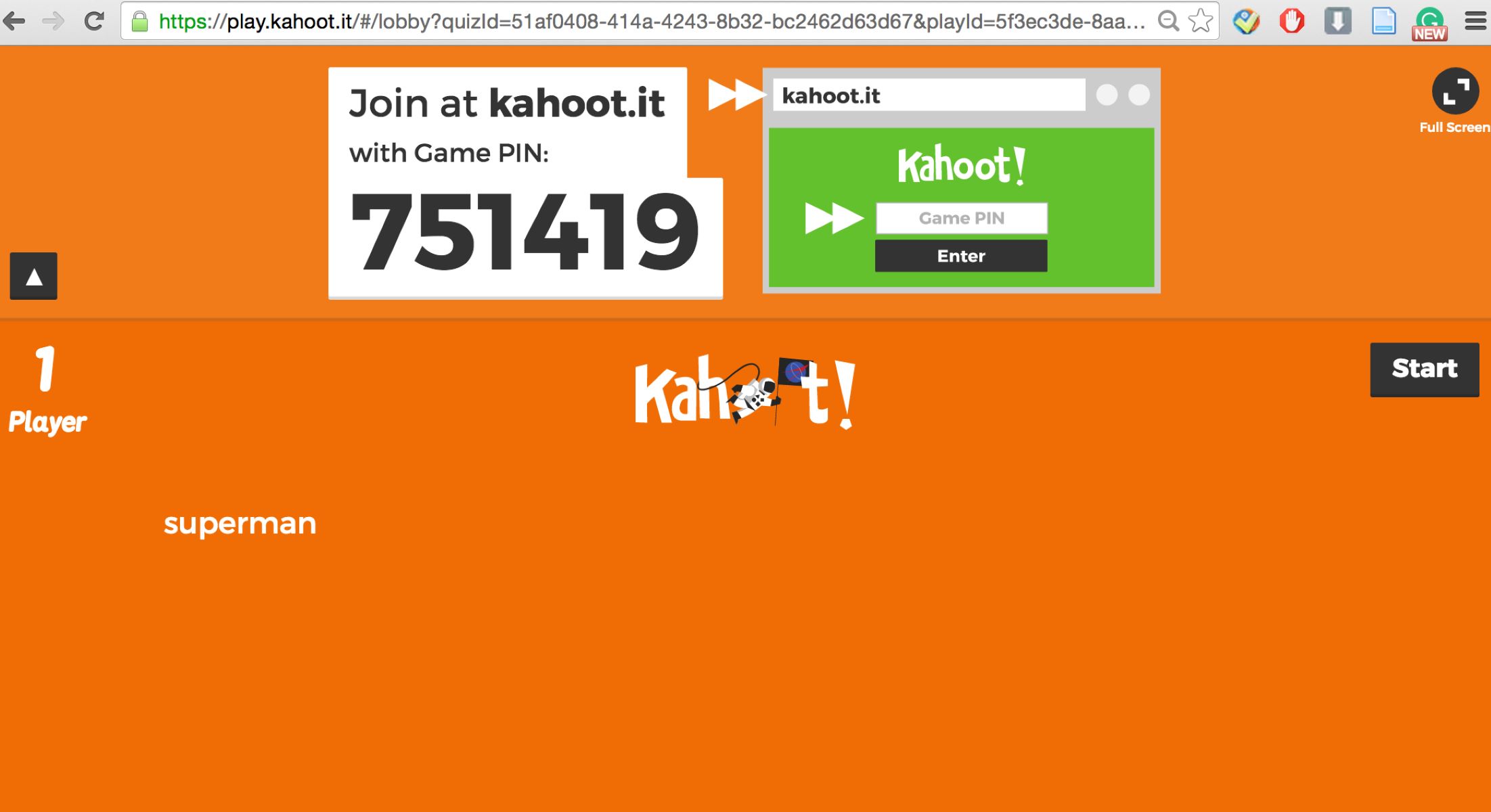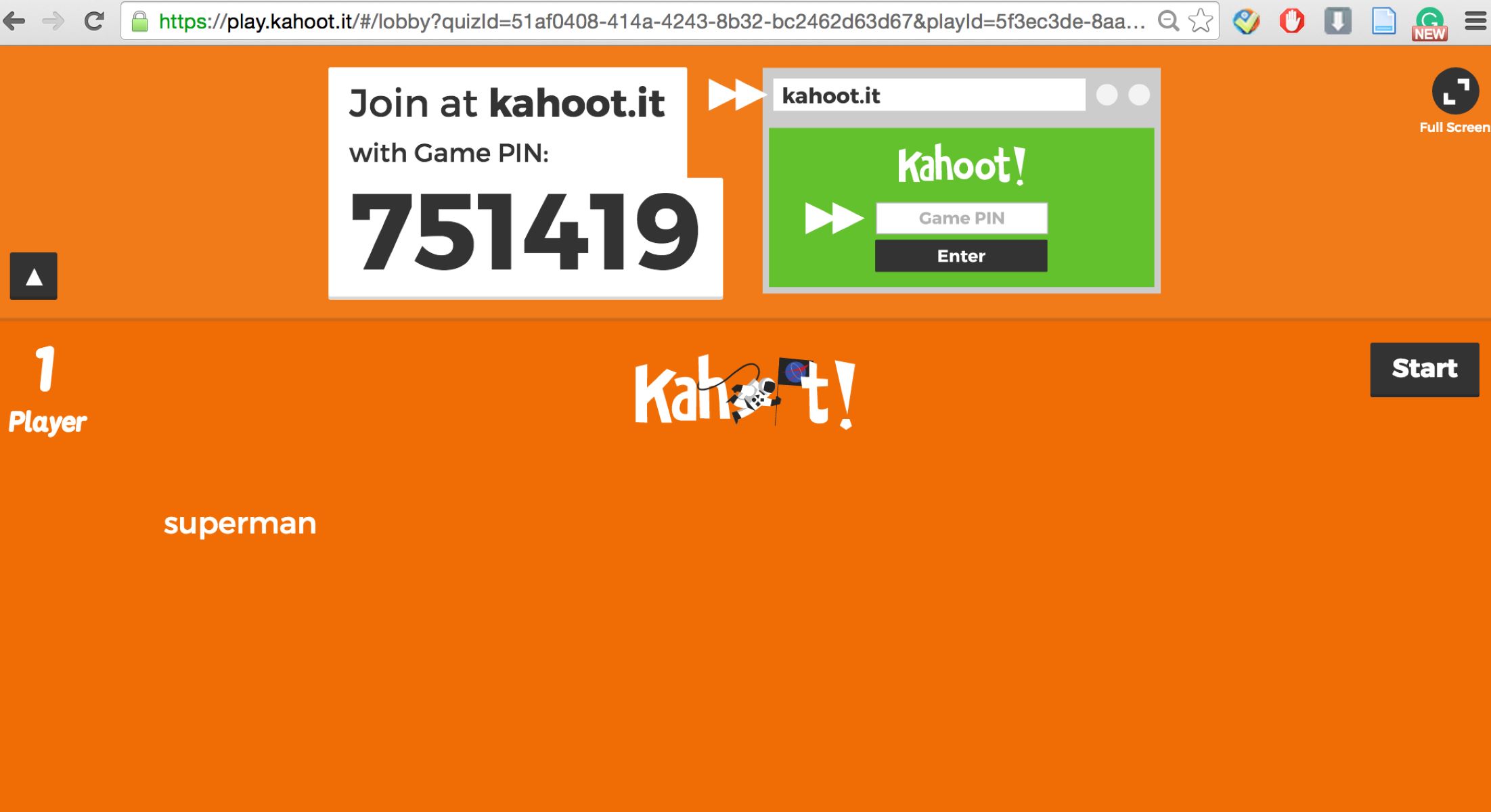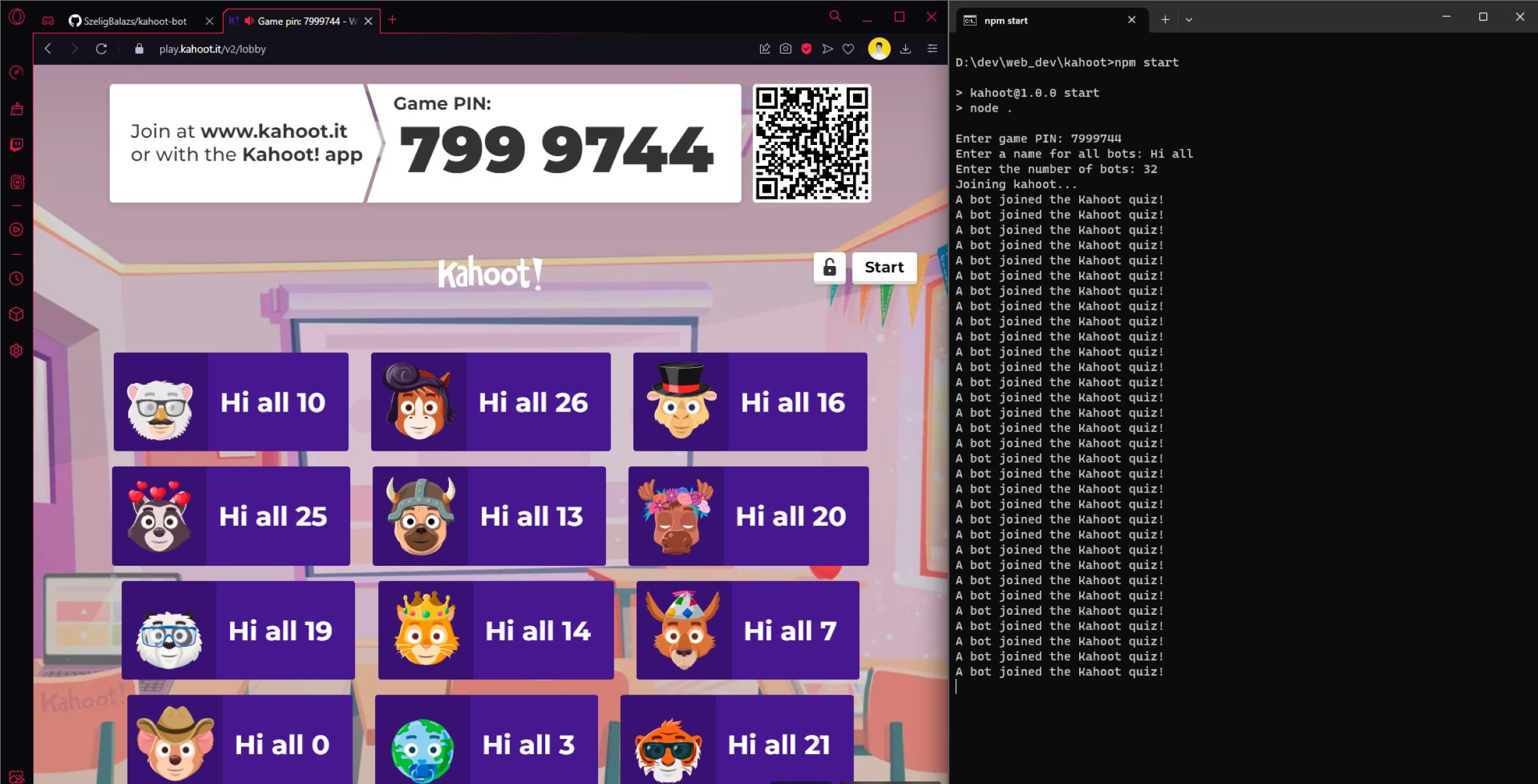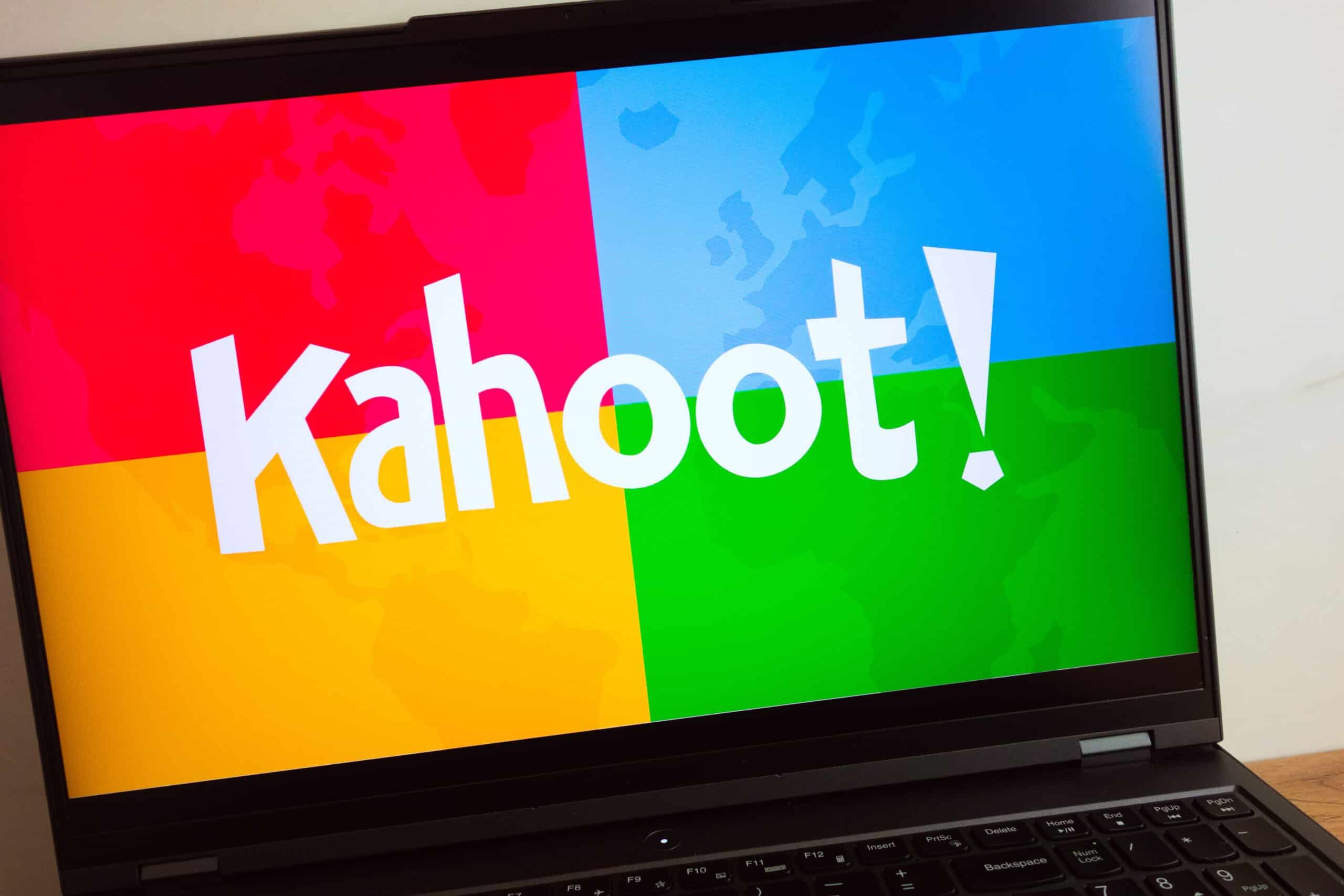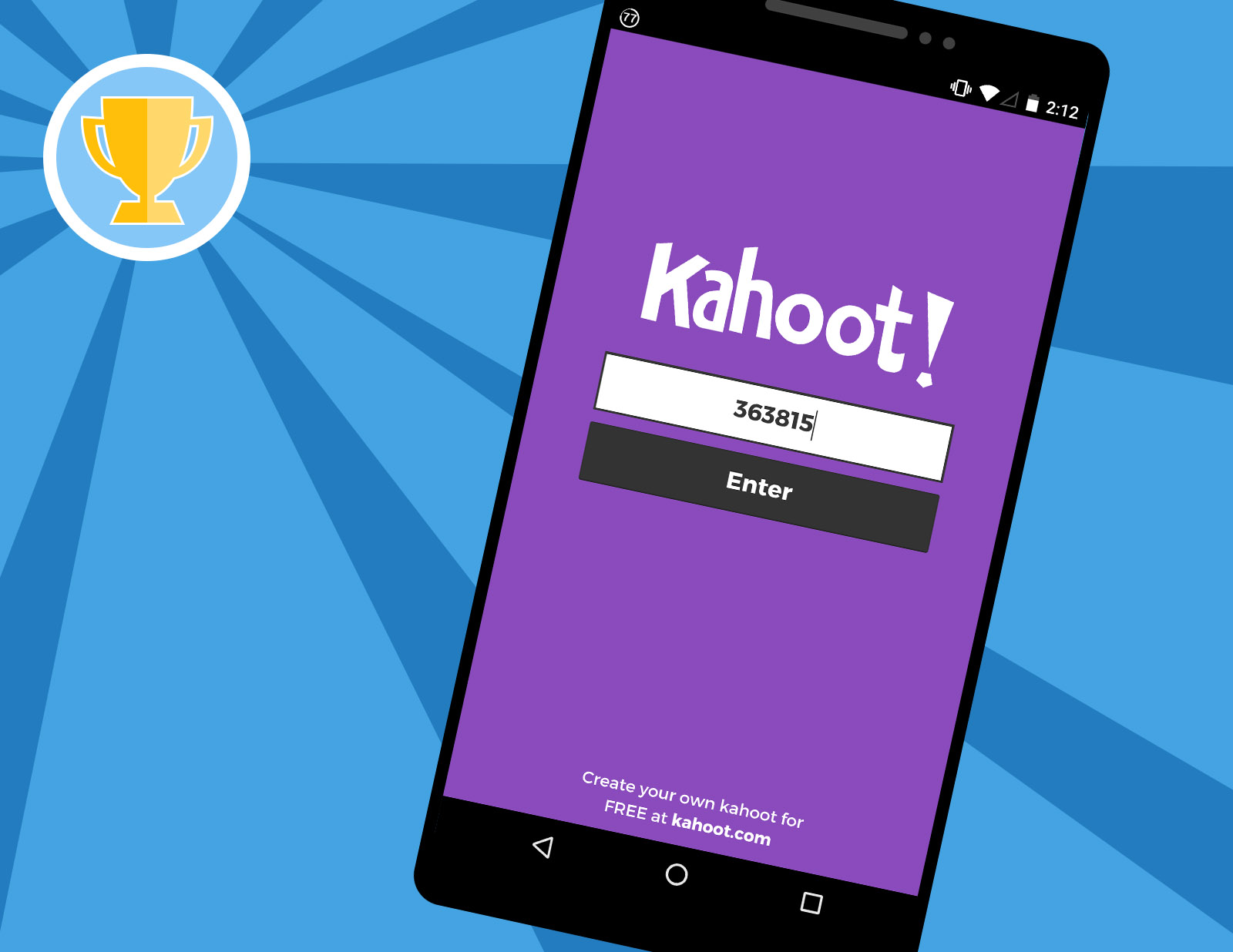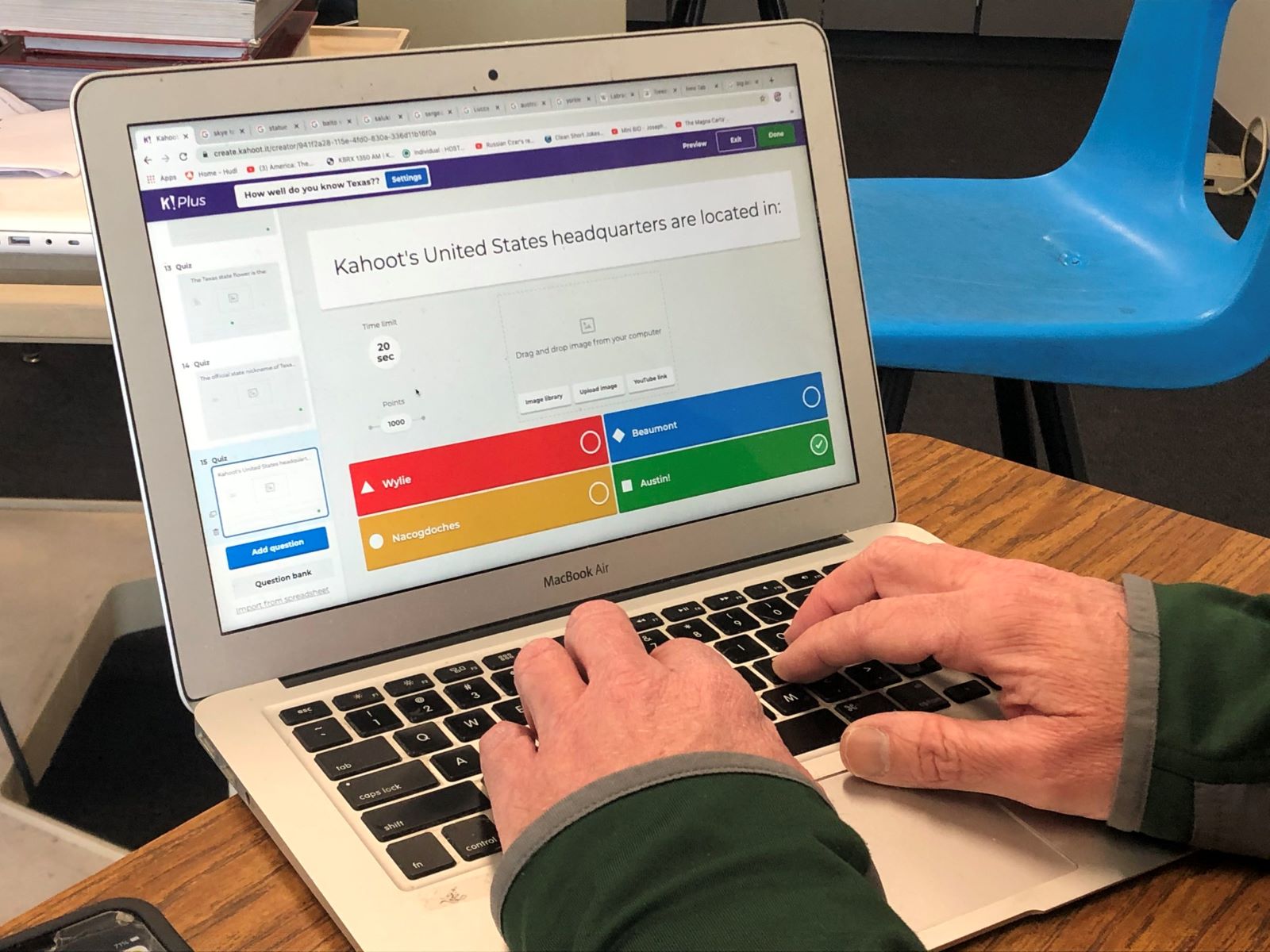What is Kahoot?
Kahoot is an interactive learning platform that allows educators and students to create, play, and share educational quizzes, surveys, and discussions. It is a popular tool used in classrooms, training sessions, and virtual meetings to engage and assess participants’ knowledge.
Kahoot is designed to make learning fun and interactive. It incorporates game-based elements, such as points, leaderboards, and competitive challenges, making it an engaging learning experience for both individuals and teams.
Teachers and trainers can create their own Kahoot games or choose from a library of pre-made quizzes, covering a wide range of subjects and topics. These quizzes can be customized with images, videos, and timers to create a dynamic learning environment.
During a Kahoot session, the game is displayed on a shared screen, while participants use their own devices, such as smartphones, tablets, or computers, to join and answer the questions. The questions appear on the participants’ devices, and they select the correct answers within a time limit. Points are awarded based on accuracy and speed, fostering a competitive spirit among participants.
The results are displayed at the end of the game, allowing participants to see their performance and compare it with others. This instant feedback encourages learning and motivates individuals to improve their knowledge and skills.
Kahoot can be used in various educational settings, including classrooms, online courses, team building activities, and corporate training sessions. It promotes active participation, collaboration, and critical thinking, making it an effective tool for both educators and learners.
How does Kahoot work?
Kahoot follows a simple and interactive process that engages participants and fosters a collaborative learning environment.
1. Creation: The first step in using Kahoot is creating or selecting a quiz. Educators and trainers can create their own quiz by adding multiple-choice questions, images, videos, and other media elements. Alternatively, they can choose from a vast library of pre-made quizzes available on the platform.
2. Sharing: Once the quiz is created, a unique game code or “Kahoot pin” is generated. This pin allows participants to join the game using their own devices. The pin can be shared with participants through various methods such as displaying it on a shared screen, sending it via email or messaging apps, or embedding it in a website.
3. Joining: Participants use their devices to access the Kahoot website or app and enter the game pin. Once entered, they are prompted to enter their name or a unique identifier. This step ensures that participants are recognized and their scores are attributed correctly.
4. Playing: Once all participants have joined, the game begins. The questions are displayed on the shared screen, and participants have a limited time to select the correct answer on their devices. Points are awarded based on the accuracy and speed of the response.
5. Feedback: At the end of each question, the correct answer is revealed, and participants receive instant feedback on their performance. The leaderboard shows the current rankings, creating a sense of competition and motivation among participants.
6. Results: After the game finishes, a detailed summary of the participants’ performance is displayed. This includes individual scores, response times, and a breakdown of correct and incorrect answers. Educators and trainers can use this information to assess participants’ understanding of the material and identify areas that require further attention.
Kahoot’s intuitive and interactive interface makes the learning experience enjoyable and engaging, promoting active participation and knowledge retention. Whether used in classrooms, training sessions, or virtual meetings, Kahoot encourages collaboration, critical thinking, and healthy competition among participants.
How many numbers are in a Kahoot pin?
A Kahoot pin consists of exactly six numbers. These numbers serve as a unique identifier for a specific Kahoot game or session. The six-digit format ensures that each pin is distinct and not easily duplicated, ensuring the integrity of the game and preventing unauthorized access.
The use of numbers in the pin is a deliberate choice by the Kahoot developers. It simplifies the process of joining a game, as participants only need to enter the six-digit pin on their devices to connect to the game session. The numeric format also eliminates the need for participants to remember complex alphanumeric codes or symbols.
Each Kahoot game generates a unique six-digit pin, ensuring that participants join the correct session and preventing any confusion or overlap between different games. The pin serves as the key to access the specific game and participate in the quiz, survey, or discussion.
Furthermore, the use of numbers in the pin allows for quick and efficient entry, especially when time is a factor. Kahoot games are often played in a fast-paced environment, where participants have a limited amount of time to answer questions. Using a six-digit numeric pin reduces the chances of input errors or delays in joining, providing a seamless experience for all participants.
It is important to note that the Kahoot pin is temporary and specific to each game session. Once the game ends, the pin becomes invalid and cannot be used to join another session. This ensures the security of subsequent games and prevents unauthorized access.
In summary, a Kahoot pin consists of six numbers and serves as a unique identifier for a specific game session. The use of numbers simplifies the joining process and ensures the integrity and security of each game. So, when you’re ready to join a Kahoot game, keep an eye out for the six-digit pin and get ready to have some fun!
Why are there only numbers in a Kahoot pin?
The decision to use only numbers in a Kahoot pin serves multiple purposes and enhances the functionality and accessibility of the platform.
1. Simplicity: By using only numbers, Kahoot pins are easy to read, remember, and enter. Participants can quickly join a game session by simply typing in the six-digit pin on their devices. This simplicity is especially important in fast-paced environments where time is limited, such as classrooms or training sessions.
2. Efficiency: Numeric pins allow for efficient and error-free entry. Participants can easily input the pin without the need to remember complex alphanumeric codes or symbols. This helps reduce input errors and ensures a seamless experience for everyone joining the game session.
3. Accessibility: Numbers are universally understood and recognized. Using numbers in the pin makes it accessible to people of different languages and cultures. It eliminates the need to interpret or translate characters, ensuring that participants from around the world can easily join and engage in Kahoot games.
4. Distinctiveness: By using a unique combination of six numbers, Kahoot pins are distinguishable from one another. This prevents confusion or overlap between different game sessions, ensuring that participants join the correct session. It also adds a layer of security, as it becomes more challenging for unauthorized users to guess or access a specific game session’s pin.
5. Efficiency in generating pins: The use of numbers simplifies the process of generating and validating pins. By limiting the pin to numerical digits, the generation algorithm becomes more straightforward and efficient, allowing for a smooth and quick generation of unique pins for each game session.
Overall, the decision to use only numbers in a Kahoot pin was made to prioritize simplicity, efficiency, accessibility, distinctiveness, and security. This approach enhances the user experience and ensures that participants can easily join and engage in Kahoot games, regardless of their language or location.
Can the Kahoot pin have letters or symbols?
No, a Kahoot pin consists only of numbers and does not include letters or symbols. The pin is a six-digit alphanumeric code, where each digit can range from 0 to 9. The use of numbers in the pin serves to provide a simple and efficient way for participants to join a Kahoot game session.
Using only numbers in the pin eliminates the need for participants to remember or input complex combinations of letters or symbols. It also ensures that the pin is universally understood and accessible to users from different languages and regions.
The decision to exclude letters and symbols from the pin design is deliberate and has several benefits:
1. Simplicity: The numeric format simplifies the joining process, making it easier and quicker for participants to enter the game code on their devices. This is particularly important in time-sensitive situations, such as classrooms or training sessions, where participants need to join the game promptly.
2. Clarity: Numeric pins offer clear and unambiguous identification. With only numbers in the pin, there is no room for confusion or misinterpretation of characters. This ensures that participants enter the correct game session without any errors or mix-ups.
3. Security: By limiting the pin to numbers, it becomes more challenging for unauthorized users to guess or access a specific game session. The absence of letters or symbols reduces the possibilities for password cracking or brute-force attacks.
While the pin itself consists only of numbers, it’s worth noting that Kahoot allows participants to choose a username or identifier with letters and symbols once they have entered the game session. This username is displayed during the game to track individual scores and participation.
In summary, the Kahoot pin is exclusively composed of numbers. This intentional design choice ensures simplicity, clarity, and security during the joining process. Participants can easily enter the unique six-digit numerical code to connect to a specific Kahoot game session and enjoy the interactive and engaging learning experience it offers.
How long is a Kahoot pin?
A Kahoot pin is a unique identifier for a game session and consists of six digits. The six-digit format ensures that each pin is distinct and not easily duplicated. This length strikes a balance between providing a sufficiently unique code and allowing for quick and efficient entry by participants.
The decision to keep the pin at six digits was made to optimize the user experience and ensure a seamless joining process. With only six characters to enter, participants can quickly input the pin on their devices, especially in time-constrained environments such as classrooms or training sessions.
The length of six digits also helps in preventing accidental entry errors. Participants are less likely to mistype or misremember a six-digit code compared to longer codes. This reduces the chances of incorrect codes being entered and ensures that participants join the intended game session.
Furthermore, a six-digit pin provides a sufficient number of combinations to generate unique game sessions. With ten possible digits (0 to 9) in each position, there are a total of one million (10⁶) unique combinations available for Kahoot pins. This means that there are ample possibilities for different game sessions to have their own distinct pin and prevent any overlap or confusion.
The length of the Kahoot pin is a deliberate design choice to balance user-friendliness, uniqueness, and efficient entry. It allows participants to easily join a game session while ensuring the security and integrity of the platform.
It is important to note that Kahoot pins are temporary and specific to each game session. Once the game session ends, the pin becomes invalid and cannot be used to join another session. This ensures that subsequent game sessions have their unique identifiers and prevents unauthorized access.
In summary, a Kahoot pin consists of six digits, striking a balance between user-friendliness and uniqueness. This length allows for quick and efficient entry by participants while ensuring the security and integrity of the game sessions.
How do I enter a Kahoot pin?
Entering a Kahoot pin is a straightforward process that allows participants to join a specific game session and start playing. To enter a Kahoot pin, follow these simple steps:
1. Open the Kahoot app or website: Launch the Kahoot app on your mobile device or open a web browser and navigate to the Kahoot website.
2. Join a game: Look for the option to join a game or enter a game pin. This will typically be found on the home screen or in a designated “Join Game” section.
3. Enter the pin: Type in the six-digit pin provided by the host or displayed on the shared screen. Take care to enter the pin accurately to ensure that you join the correct game session.
4. Add a nickname: Once you have entered the pin, you may be prompted to enter a nickname or identifier. This nickname will be displayed during the game to track your scores and participation. Choose a unique and memorable nickname, and input it as directed.
5. Join the game: After entering the pin and providing a nickname, select the “Join Game” or similar button to officially join the game session. You will then be connected to the game and ready to participate.
6. Wait for the game to start: Once all participants have joined, the host will start the game. Be patient and pay attention to the shared screen, as that is where the questions and answer options will appear.
7. Answer the questions: As the game progresses, questions will be displayed on the shared screen, and answer options will be available on your device. Read the question, choose the correct answer, and submit your response within the time limit given.
8. Track your progress: After each question, you will receive feedback on your answer and see how you rank compared to other participants. Keep an eye on the leaderboard and strive to improve your score as the game continues.
By following these steps, you can easily enter a Kahoot pin and join a game session. Remember to pay attention to the instructions and enjoy the interactive and engaging learning experience that Kahoot offers.
What happens if I enter the wrong pin in Kahoot?
If you enter the wrong pin in Kahoot, you will not be able to join the intended game session. The platform will display an error message indicating that the pin is incorrect or invalid. Here are a few things that may happen if you enter the wrong pin:
1. Error message: When you enter an incorrect pin, Kahoot will display an error message stating that the pin you entered is incorrect or invalid. This message serves as a notification that the pin does not correspond to an active game session. It may prompt you to recheck the pin or try again with the correct code.
2. Inability to join the game: As the pin is the unique identifier for a specific Kahoot game session, entering the wrong pin means that you will not be able to join that particular session. You may need to obtain the correct pin from the host or ensure that you have correctly copied the pin if it was provided to you.
3. Retry option: In some cases, Kahoot may give you the option to try entering the pin again. This allows you to double-check the digits you entered and make corrections if necessary. However, it is important to note that repeated incorrect entries may result in being locked out of joining the game session.
4. Need to find the correct pin: If you entered the wrong pin, you will need to obtain or confirm the correct pin to join the intended game session. This may require communication with the game host or source, such as a teacher, trainer, or event organizer. They will be able to provide you with the correct pin or assist in troubleshooting any issues you may be experiencing.
It is important to ensure that you enter the correct pin when joining a Kahoot game session. The pin serves as a unique identifier, allowing participants to connect to the intended session and participate in the quizzes, surveys, or discussions. Double-checking the digits and verifying the pin with the host can help avoid frustration and ensure a smooth joining process in Kahoot.
Can I use the same pin for multiple Kahoot games?
No, you cannot use the same pin for multiple Kahoot games. Each game session in Kahoot generates a unique pin that is specific to that particular session. The purpose of having a unique pin for each game is to ensure that participants join the intended session and prevent any confusion or overlap between different games.
When creating a Kahoot game, a new pin is generated for that specific session. This pin serves as the unique identifier that participants will use to join the game. Once the game session ends, that pin becomes invalid and cannot be used to join a new game.
The use of unique pins for each game session ensures the integrity and security of the game. It prevents unauthorized access and ensures that participants are engaging in the correct content for that particular session.
Creating a new pin for each game also allows multiple games to be played simultaneously. This is particularly useful in educational settings where different instructors or trainers may be running their own Kahoot games in different classrooms or virtual environments.
Therefore, to join a specific Kahoot game, you will need to obtain the pin for that particular session. The pin is typically provided by the game host, such as a teacher, trainer, or event organizer. Ensure that you have the correct pin to join the intended game and have an interactive learning experience with Kahoot.
How are Kahoot pins generated?
Kahoot pins, which are unique identifiers for game sessions, are generated using a combination of randomized algorithms and secure protocols. The pin generation process ensures that each game session receives a distinct and unrepeatable identification code. While the exact details of the pin generation algorithm are proprietary to Kahoot, here is a general overview of how Kahoot pins are generated:
1. Randomization algorithm: Kahoot uses a randomization algorithm to generate the initial pin. This algorithm ensures that each pin consists of a unique combination of characters, providing a vast number of possible combinations.
2. Secure protocols: During the pin generation process, secure protocols are employed to ensure the pins generated are not predictable or easily replicated. This helps maintain the integrity and security of the game session, preventing unauthorized access.
3. Length and format: Kahoot pins are designed to be six digits long, consisting only of numerical digits ranging from 0 to 9. This specific format allows for easy entry by participants and ensures the uniqueness of each pin.
4. Uniqueness: The randomization algorithm and secure protocols guarantee that each game session receives a unique pin. This uniqueness is important to avoid any overlap or confusion between different game sessions.
5. Temporary nature: Kahoot pins have a temporary nature and are specific to each game session. Once the game session ends, the pin becomes invalid and cannot be used to join another session. This temporary nature ensures the security of subsequent games and prevents unauthorized access.
By combining randomization algorithms, secure protocols, and a specific format, Kahoot generates unique pins for each game session. These pins provide a simple and efficient way for participants to join the intended game and facilitate interactive and engaging learning experiences.
Are Kahoot pins random?
Yes, Kahoot pins are generated using randomization algorithms, making them random and unique for each game session. The randomization process ensures that the pins are not predictable or easily replicated, enhancing the security and integrity of the game.
Randomization is an important aspect of generating Kahoot pins to prevent unauthorized access and maintain a fair and competitive environment for participants. By using randomization algorithms, Kahoot ensures that each pin consists of a unique combination of digits, eliminating the possibility of duplicate pins or predictable patterns.
Random pins contribute to the overall quality of the Kahoot experience. They add an element of surprise, as participants cannot anticipate the specific pin they will encounter for a given game session. This randomness enhances the fairness of the game, as participants have an equal opportunity to join and compete against others.
It is worth noting that the random nature of Kahoot pins does not mean that they are completely arbitrary or without structure. While the pins themselves are random, they are generated using specific algorithms and secure protocols to meet the requirements of uniqueness and security.
The random nature of Kahoot pins also allows for a large number of possibilities. With a pin consisting of six digits and each digit ranging from 0 to 9, there are a million (10^6) different permutations available. This ensures a low likelihood of repeated pins and enhances the overall security of the platform.
To summarize, Kahoot pins are indeed random. The use of randomization algorithms ensures that each game session receives a unique and unpredictable pin. This random nature contributes to the fairness, security, and excitement of the Kahoot experience.
Can I create my own Kahoot pin?
No, as a participant, you cannot create your own Kahoot pin. The pin is generated by the Kahoot platform for each specific game session and serves as a unique identifier for that session. The pin generation process ensures the integrity, security, and uniqueness of the game.
The purpose of having a system-generated pin is to prevent unauthorized access and maintain a fair and controlled environment for participants. By using a unique pin for each game session, Kahoot ensures that participants join the intended session and avoid confusion or overlap with other games.
While you cannot create your own Kahoot pin, you can participate in a game by entering the pin provided to you by the game host. The host, typically a teacher, instructor, or event organizer, is responsible for generating the pin and sharing it with the participants.
It’s important to enter the correct pin to join the intended game session. The pin ensures that you connect to the correct content and have an interactive learning experience with Kahoot. If you are unsure about the pin or are experiencing any difficulties, reach out to the game host for assistance.
While you are unable to create your own Kahoot pin as a participant, you can create your own Kahoot game as a host. If you are an educator, trainer, or event organizer, you can use the Kahoot platform to create your own quizzes, surveys, or discussions and generate a unique pin for your game session. This allows you to tailor the content and engage your participants in a fun and interactive way.
In summary, as a participant, you cannot create your own Kahoot pin. The pin is generated by the platform for each game session, ensuring its uniqueness and security. To join a game, you will need to obtain the correct pin from the game host. However, if you are a host, you have the ability to create your own Kahoot game and generate a unique pin for your session.
Can I choose a specific Kahoot pin?
No, as a participant or game host, you cannot choose a specific Kahoot pin. The pins are generated by the Kahoot platform and assigned to each game session to ensure uniqueness, security, and fairness.
Kahoot pins are automatically generated using randomization algorithms and secure protocols. This process guarantees that each pin is distinct and not easily replicated. It helps maintain the integrity of the game session and prevents unauthorized access.
The inability to choose a specific pin is intentional and serves several purposes:
1. Security: The random generation of pins enhances the security of the game sessions. In a scenario where anyone can choose their pin, it becomes easier for unauthorized individuals to join or disrupt the game. The automatic generation of pins helps minimize this risk and maintains a secure environment.
2. Fairness: Randomly assigned pins ensure fairness among participants. It ensures that no individual or group can gain an advantage by selecting a specific pin. Each participant has an equal opportunity to join the game without any bias or advantage.
3. Unique Identifiers: The automatic generation of unique pins allows for a large number of simultaneous game sessions. This is especially useful in educational settings where multiple instructors may be running separate games at the same time. With random pins, each session can have its own distinct identifier to avoid confusion or overlapping between games.
While you cannot select a specific Kahoot pin for your game session, you can still enjoy the interactive learning experience provided by Kahoot. As a participant, obtain the pin from the game host to join the intended game. As a host, generate a pin for your session and share it with your participants to ensure they join the correct game.
In summary, the ability to choose a specific Kahoot pin is not available to participants or game hosts. The pins are generated automatically to prioritize security, fairness, and uniqueness. Embracing the randomness of the pin generation process ensures that each game session is secure, fair, and distinct.
Are Kahoot pins case-sensitive?
No, Kahoot pins are not case-sensitive. The pin entry field is designed to be case-insensitive, meaning that uppercase and lowercase letters are treated as the same. Participants can enter the pin using either uppercase or lowercase letters without affecting the validity of the pin.
When entering a Kahoot pin, the system does not differentiate between uppercase and lowercase letters. This feature ensures a seamless user experience and reduces the potential for input errors caused by incorrect letter case.
For example, if the pin is “123ABC,” participants can enter it as “123abc,” “123AbC,” or any other combination of uppercase and lowercase letters. The system will recognize and accept the pin regardless of the letter case used.
By making the pin entry case-insensitive, Kahoot eliminates the need for participants to remember or precisely use the correct letter case when joining a game session. This simplifies the joining process and reduces the likelihood of errors or frustrations caused by case sensitivity.
It is important to note that while the letter case does not affect the validity of the pin, participants should still ensure that the digits and letters of the pin are entered accurately. Any mistyped characters, regardless of their letter case, may result in an invalid or incorrect pin entry.
So, when entering a Kahoot pin, feel free to use uppercase or lowercase letters interchangeably. Focus on accurately inputting the correct digits and letters without worrying about the specific case.
In summary, Kahoot pins are not case-sensitive. Participants can enter the pin using either uppercase or lowercase letters, and the system will treat them as the same. This design choice simplifies the pin entry process and reduces the potential for input errors caused by letter case sensitivity.
Can I write down the Kahoot pin?
Yes, it is perfectly acceptable and even recommended to write down the Kahoot pin. Writing down the pin can help ensure that you have it readily available when you need to join a game session. It is a practical way to avoid the risk of forgetting or mistyping the pin.
When participating in a Kahoot game, it’s common for the pin to be displayed on a shared screen or communicated to you by the game host. To ensure that you enter the correct pin, it’s helpful to write it down on a piece of paper, in your notebook, or in a digital note-taking app.
By writing down the pin, you can easily refer back to it at any time, especially if there is a time gap between receiving the pin and joining the game session. It also provides a quick and convenient reference when you are ready to enter the pin on your device.
Writing down the pin can be particularly useful in educational settings, classrooms, or training sessions where multiple game sessions may be happening simultaneously. Keeping track of the pin for each game session ensures that you join the intended game and avoid confusion or overlap between sessions.
Remember to keep the written pin in a safe place and treat it as confidential information. The pin serves as a unique identifier for the game session and should not be shared or disclosed to anyone who is not intended to join the game.
Writing down the Kahoot pin is a responsible and practical approach to joining a game session. It helps ensure a seamless and hassle-free experience, allowing you to focus on participating and enjoying the interactive learning experience that Kahoot offers.
In summary, you can write down the Kahoot pin to have it readily available when joining a game session. It’s a practical way to ensure that you enter the correct pin and avoid the risk of forgetting or mistyping it. Just make sure to keep the written pin in a secure place and treat it as confidential information.
Can I share my Kahoot pin with others?
No, as a participant, you should not share your Kahoot pin with others. The pin serves as a unique identifier for a specific game session and is intended for the participants who are meant to join that particular session.
The purpose of generating a unique pin for each game session is to ensure the integrity, security, and fairness of the game. Sharing the pin indiscriminately can lead to unauthorized access and disrupt the game experience for other participants.
When you receive a Kahoot pin, it is important to keep it confidential and not disclose it to anyone who is not intended to participate in that specific game session. This helps maintain a controlled and secure environment for the game.
However, there may be instances where the game host, such as a teacher, trainer, or event organizer, needs to share the pin with the participants. In such cases, it is the responsibility of the game host to communicate the pin securely and ensure that it reaches only the intended participants.
Sharing the pin with unauthorized individuals can lead to various issues, including:
– Unauthorized access: If the pin falls into the wrong hands, it may allow someone to join the game session without permission. This can disrupt the game, compromise the fairness of the competition, and violate the privacy and security of the participants.
– Overcrowding: Sharing the pin with more individuals than intended can result in overcrowding of the game session. This can lead to performance issues, unreliable connection, and a suboptimal user experience for all participants.
– Unwanted participation: Sharing the pin with unauthorized individuals can result in individuals joining the game who may not be meant to participate. This can lead to distractions, inappropriate behavior, or disruption of the learning or gaming environment.
To ensure a positive and secure Kahoot experience, it is essential to follow the guidelines and only share the pin with the intended participants. If you are unsure about who should receive the pin or suspect any unauthorized access, communicate your concerns with the game host or the relevant authority.
In summary, participants should not share their Kahoot pins with others. The pin serves as a unique identifier for each game session and should only be shared with the intended participants. Maintaining confidentiality and following the guidelines provided by the game host ensures a secure and controlled environment for everyone involved in the Kahoot game.
What should I do if someone else has my Kahoot pin?
If you suspect or discover that someone else has your Kahoot pin, it is important to take prompt action to protect the security and integrity of your game session. Here are some steps you can take:
1. Alert the game host: Inform the game host, such as your teacher, trainer, or event organizer, immediately about the situation. They should be made aware of any unauthorized access to your game session so that they can take appropriate measures to address the issue.
2. Change the pin: If possible, ask the game host to generate a new pin for the game session. Changing the pin will ensure that the unauthorized individual can no longer access the session. Communicate the new pin securely to the intended participants to prevent any further unauthorized access.
3. Monitor participant list: Keep an eye on the list of participants in your game session. If you notice any unfamiliar usernames or individuals who were not supposed to join, inform the game host about them. The host can remove or block unauthorized participants to maintain the integrity of the session.
4. Report the incident: If you suspect malicious intent or unauthorized access, report the incident to the appropriate authority or platform support. This is particularly important if you believe your privacy or security has been compromised. Provide any relevant details or evidence to assist in the investigation of the incident.
5. Adjust security measures: Discuss with the game host or platform administrators any additional security measures that can be implemented to prevent similar incidents in the future. This may include using features like password-protected sessions or implementing stricter access controls to ensure only authorized participants can join the game.
6. Stay vigilant: Be cautious in sharing the pin with others in the future. Only share the pin with the intended participants and avoid disclosing it to unauthorized individuals. Remind other participants to do the same to maintain a secure and controlled gaming environment.
By taking these steps, you can address the situation promptly and ensure the security and integrity of your Kahoot game session. It is important to collaborate with the game host and platform administrators to implement appropriate security measures and prevent any further unauthorized access.
In summary, if you suspect or discover that someone else has your Kahoot pin, notify the game host immediately, change the pin if possible, monitor the participant list, report the incident if necessary, adjust security measures, and remain vigilant in the future. These actions will help protect the integrity of your game session and maintain a secure environment for all participants.
How long is a Kahoot pin valid for?
A Kahoot pin is typically valid for the duration of the specific game session. Once the game session ends, the pin becomes invalid and cannot be used to join another game. The pin’s validity is limited to the period in which the game session is active.
Kahoot pins are temporary and dynamically generated for each game session. This approach ensures the security and integrity of the game by preventing unauthorized access to ongoing or future sessions. It also allows for multiple game sessions to be created and conducted simultaneously without any overlap or confusion.
Once a game session concludes, the pin is disassociated with that particular session and becomes available for use by a new game session. This ensures that subsequent sessions receive unique pins and participants can join the intended sessions without any confusion.
It’s important to note that the duration of a game session can vary. It depends on factors such as the game host’s preferences, the content being covered, and the allotted time for the activity. The game host has control over the start and end times of the session, and participants can only join while the session is active.
Participants should be aware that entering an expired or concluded game session’s pin will result in an error message indicating that the pin is no longer valid. This serves to prevent participation in an ended session and ensures that participants can join and engage with new and active sessions.
To ensure you join the correct game session and have an interactive experience, it is recommended to obtain the most up-to-date pin from the game host. This will ensure that you have the current and valid pin for the game session you wish to join.
In summary, a Kahoot pin is valid for the duration of the specific game session. Once the session concludes, the pin becomes invalid and cannot be used to join another game. Obtaining the most recent pin from the game host is essential in ensuring participation in active and valid game sessions.
Can I reuse a Kahoot pin after a game has ended?
No, you cannot reuse a Kahoot pin after a game has ended. Once a game session concludes, the pin associated with that session becomes invalid and cannot be used to join another game. Kahoot pins are unique to each session and are generated dynamically for security and integrity purposes.
The decision to make pins non-reusable after a game session is intentional. It helps prevent unauthorized access to subsequent sessions and ensures that participants join the intended game without any confusion or overlap.
Reusing a Kahoot pin from a previous game session can lead to several issues:
– Unauthorized access: Reassigning a past pin to a new game session may inadvertently allow individuals who were not meant to participate to join the new session. This compromises the security and fairness of the game.
– Game interference: Reusing a pin could potentially lead to interference or disruption between simultaneous game sessions taking place across different environments. By generating new pins for each session, Kahoot ensures a controlled and separate experience for participants.
– Data integrity: Each game session generates a unique set of data, including participant scores and responses. Reusing a pin would mix or overwrite this data, making it challenging to accurately track individual performance and analyze results.
To ensure a smooth and secure gaming experience, it is essential to generate a new and unique pin for each game session. This guarantees that subsequent sessions receive their specific identifier and participants can join without any confusion or interference.
Remember to obtain the most up-to-date pin from the game host when you want to join a new game session. The host will provide you with the current and valid pin, allowing you to engage with the correct session and enjoy an interactive learning experience.
In summary, you cannot reuse a Kahoot pin after a game has ended. Each game session requires a new and unique pin to maintain the security, fairness, and integrity of the game. Obtaining the most recent pin from the game host ensures participation in the correct and active game session.







